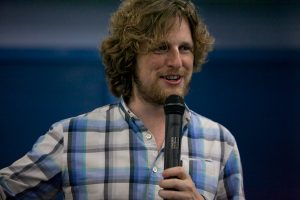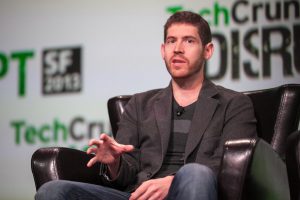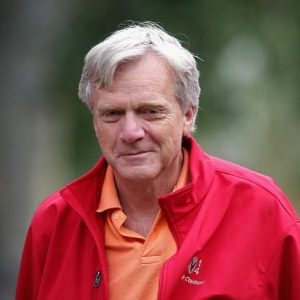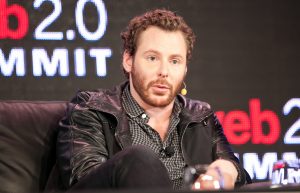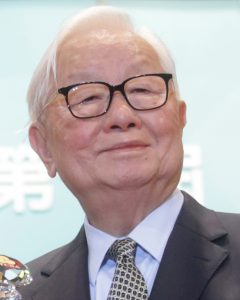Reid Hoffman : The Mind Behind the Largest Corporate Social Network
Sometimes, it takes a long process for a person to understand and choose the right way that leads to his goals. Only a few can dream to help others achieve their dreams and bring out a positive change in the world. But if one truly wants to accomplish his dreams, he will find out a way. Same is the story of the infamous American internet entrepreneur and the venture capitalist- Reid Hoffman, who had initially dreamt about changing the world through his motivational speeches and eventually, reached out to a bigger platform and definitely have brought out his share of change.
Early Life
Reid Hoffman was born to William Parker Hoffman Jr. and Deanna Ruth, on 5 August 1967. He was born in Palo Alto, California and spent most of his childhood in Berkeley. He did his high school from The Putney School and earned his Bachelor Science degree in Symbolic Systems & Cognitive Science, from Stanford University. He was awarded a Marshall Scholarship and hence went to the Wolfson College, Oxford University to pursue a Master in Studies in Philosophy in 1993. He had also received a Dinkelspiel Award in his graduation from Stanford University.
Career
As a child, he always loved playing the tabletop roleplaying games. So in 1982, when he was just 12, he got his first job as an editor at a game developing company named as Chaosium. His work at the company was quite impressive, and in 1984, with the release of Chaosium’s ‘Borderlands’, a role-playing game, he got his name featured on its box, at the time he was just 14. He always wanted to become an influential person so that he can bring a change in the world. He had thought of becoming a professor. But soon he realised that writing books and reaching people can be a long way. So he diverted his mind towards entrepreneurship.
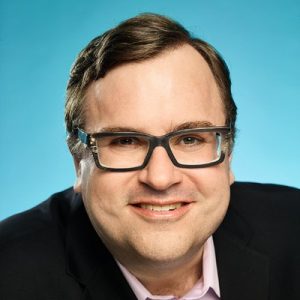
After graduating, he went to do an internship at Inglenook, a winery, followed by a job at Apple Computer. In Apple, he worked on a social network named as eWorld. After working for some time in Apple, he took a job at Fujitsu and in 1997, found his first company named as SocialNet.com. Soon after, setting up SocialNet.com, he joined PayPal as the COO, in 2000. His boss at PayPal, Peter Thiel says about Hoffman that he was a firefighter-in-chief at PayPal. At Paypal, he was responsible for most of the high-level jobs like payment infrastructure, government, legal issues, etc., that he handled efficiently under a great pressure.
Founding of LinkedIn
After eBay acquired Paypal, in 2002, Reid Hoffman co-founded LinkedIn, a professional social media network, with his old colleagues from SocialNet.com and Fujitsu. He also received some investment from his colleagues from Paypal, Peter Thiel and Keith Rabois. LinkedIn became a huge success and Hoffman became its founding CEO. Today, Hoffman holds a share worth $2.34 billion in Linked in and he serves as the Executive Chairman of the company. By 2014, LinkedIn had spread in more than 200 countries, with over 332 million members. In June 2016, Microsoft offered him an amount of $26.2 billion in cash for the acquisition of LinkedIn.
Investment, Writing & Motivational Speeches
LinkedIn was a huge success, after which, Hoffman found his interest in investment. He is one of the Angel investors, who are happily ready to invest in potential startups. It is said that Hoffman was the one who arranged the $500,000 angel investment meeting between Mark Zuckerberg and Peter Thiel. Along with Peter, he had also invested in Facebook initially.
Reid Hoffman always wanted to become a positive influence the for its betterment. His desire of becoming a motivational speaker and writing books was always alive. He started writing from local blogs, followed by his ‘LinkedIn’s Series B Pitch to Greylock: Pitch Advice for Entrepreneurs’ and ‘LinkedinInfluencr’ blogs on LinkedIn. In February 2012, he released his first book ‘The Start-Up of You’ with co-author Ben Casnocha, that became the bestseller in New York and was critically acclaimed. In July 2014, he came with another release, ‘The Alliance’ with Ben Casnocha and Chris Yeh.
Hoffman also started a podcast named as ‘Masters of Scale’ on 5 May 2017, where he discusses various counterintuitive business theories with successful entrepreneurs.
Personal Life
Hoffman got married to Michelle Yee, in 2004, and the two live in Palo Alto, California. Hoffman is also in Philanthropy and is a member of many NGOs. In 2016, he donated $20 million to a charity Biohub.

Yashica is a Software Engineer turned Content Writer, who loves to write on social causes and expertise in writing technical stuff. She loves to watch movies and explore new places. She believes that you need to live once before you die. So experimenting with her life and career choices, she is trying to live her life to the fullest.
